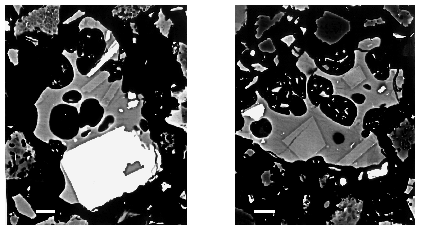KUJU, Central Kyushu
(33o04'57"N, 131o15"05"E)
(10/2/96)
According to AVL (Aso Volcano Laboratory, Faculty of Science, Kyoto University), the trend of deflation of a small area just north of the crater area had continued since the late-May. The seismological activity has been low in level; mostly less than 10 events/day. The hypocenters of these volcanic earthquakes are located 500-1500 m below the surface just around the pressure source of deflation. Powerful emission of high-temperature steam from some craterlets had continued. The Kusatsu-Shirane Volcano Observatory, Tokyo Institute of Technology, showed the isotopic and chemical data implying that magmatic componet in volcanic gas had decreased regularly since the eruptions in December 1995; the magmatic componet in the gas is around 40 %.
(6/1/96)
On 14 May, a group of earthquakes occurred about 5 km NW of the craters. According to AVL (Kyoto University), inflation was observed during the period from the end-April to early-May, although the trend of shrinking around the crater area had declined since February.
The ground temperature of the crater area which had decreased steadily since the end of the last year, suddenly increased in the end-April (Faculty of Engineering, Kyushu University). No ash emission was observed since January 1996, though strong emission of steam with the temperature more than 100 deg. C has still continued at some of craters. The amount of SO2 which was highest just after the first eruption (150-250 ton/day in Oct. 1995), has remained in the level as low as 100 ton/day (SEVO, Kyushu University).
(4/15/96)
According to Aso Volcano Laboratory (AVL), Kyoto University, the level of seismological activity increased in the late-March, although the activity had declined by the end-February. The LF events were observed in March and April. Their EDM data show continuous deflation of the crater area. A swarm of volcanic earthquakes occurred just beneath the craters on 24 March and volcanic tremors had continued intermittently by 27 March. Ash emission during this event was not confirmed due to bad weather, and also by the field inspection after the event by AVL scientists. High-temperature steaming from some craters including one from which ash emission occurred on 13 January, kept still in strong level.
(Below is the January report)
Kuju Volcano, consisting of a gruop of andesite-dacite lava domes <15 ka, started its eruption on the E slope of Mt. Hossho (1,764 m in altitude) in the evening of 11 October 1995, leaving about 260 years dormancy. No obvious precursor phenomena including earthquakes had been detected. Phreatic eruption issued tephra of 22,000 cubic meters. Small vents and craters lining up on echelon cracks, were formed. Violent steaming had continued from these vents and craters since then. The eruption triggered the detail geophysical monitoring by the Japan Meteorological Agency (JMA), Kyoto University (Aso Volcano Laboratory; AVL), Kyushu University (Dept. Mining) and so on. Deflation near the crater area had continued since the first eruption.
Phreatic explosion occurred again in the morning of 18 December 1995; tephra of this eruption was smaller in volume than on 11 October (roughly 1/5). Since then, small-scale ash emission had occurred several times, being associated with volcanic tremors and earthquakes. Small amount (roughly 1 vol.%) of juvenile particle with vesiculated clear glass was identified in the ash issued since 20 December by K. Watanabe and others, as shown below.
The latest ash eruption occurred in small scale in the night of 13 January 1996: vesiculated glass still observed. The seismic acitivity remains still in high level in early-February. Deflation near the crater area had still continued.
 (left photo) Vesiculated glass particle found in ash on December 22, 1995 (X-ray microprobe images): crystals (white to light-gray) and bubbles (black circles outlined in white) in vesiculated rhyolite glass (gray). White scale bars are 10 microns long. Taken by Y. Motomura
(left photo) Vesiculated glass particle found in ash on December 22, 1995 (X-ray microprobe images): crystals (white to light-gray) and bubbles (black circles outlined in white) in vesiculated rhyolite glass (gray). White scale bars are 10 microns long. Taken by Y. Motomura
Link to Kuju site in Geological Survey of Japan
Link to Kuju air photos in T. Chiba's home page
To eruption menu
(left photo) Vesiculated glass particle found in ash on December 22, 1995 (X-ray microprobe images): crystals (white to light-gray) and bubbles (black circles outlined in white) in vesiculated rhyolite glass (gray). White scale bars are 10 microns long. Taken by Y. Motomura